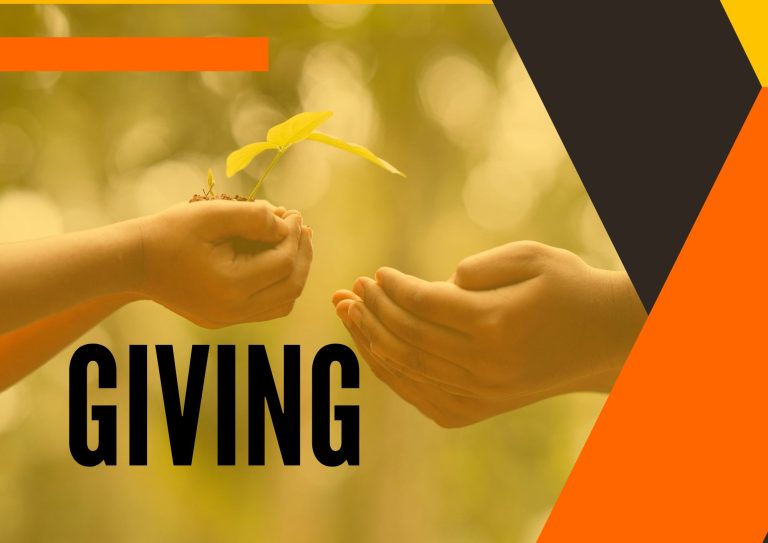Giving is intentionally offering money, time and other resources to the others free of charge. It is driven by selflessness, empathy, and an actual desire to add to the lives of other people. Giving charity, advocating for issues, and helping others have a great impact on people’s lives. These acts are mainly grouped as either charity or philanthropy.
What Is the Difference Between Charity and Philanthropy?
Charity is usually based on individual giving and helping in a short-term way, like donating coats to flood victims, helping out, or contributing food to a child’s home.
Philanthropy often helps the society or groups in the community flourish over a long-term period, like building a school or a library or donating millions to a scholarship fund.
You or anyone else can be a philanthropist if you give your talent, time, money, or skills to a particular cause, area, or social issue.

What are the benefits of giving?
- Personal Advantages: Generosity makes you happy. It gets us to feel incredibly thankful inside. Also, it stimulates the brain’s reward system, generating pleasure. Giving to others decreases stress and relieves tension and worry. Philanthropists have less depression, higher self-esteem, lower blood pressure, and may even live longer than those who don’t give. Consequently, it contributes to the improvement of their overall wellbeing.
- Societal Advantages: Giving improves the society and community by addressing social problems. It aims at solving social problems, which are, for example, poverty, education, or healthcare. All the events that address social problems, bring communities together and help build a feeling of unity which then intensifies the relations in our community.
- Global Impact: At the point where crisis emerges, prompt contribution provide necessary emergency help, medical assistance, and resources for the rehabilitation of the affected people and areas.
Why is giving important?
Generosity maybe the key to everyday problems such as poverty, pollution and treatment problems for people who cannot access health care. It accelerates progress in such areas, which can’t always be fulfilled by governments. You feel a real positive change in the world when you support such causes. This has a positive effect on people, the planet, and society as a whole. Communities are strengthened by the universal sense of helping one another.
What can you give?
Generally speaking, there are three ways in which you can give:
1. Money
Donating money to a person, charity organization, or group is the most common type of giving. Some people give regularly to the same person, charity organization, or group. Others provide a one-time lump-sum payment. They might even support multiple organizations.
2. Time
You have choice to offer your time, even if you don’t have money to give. If you have an expertise that could support the group’s work, you can contribute your time as a volunteer. While some people offer their time or skills only once, others do it regularly for months or years.
3. Resources
You could offer materials according to the specific requirements of the organization. For instance, the resources might include furniture, food, or vehicles to be used by the organization to help it fulfill its mission.
How to become a giver
1. Identify a cause.
Make a small list of some causes that you would like to provide your assistance to because you have connections with them or they are in your areas of interests. The causes could be, for example, the environment or education.
2. Look for potential opportunities.
Develop a strategic plan with which to approach the process of choosing people and organizations to whom you can offer your money, time, skills, or other resources. Identify your contribution amounts and desired outcomes. Start looking into and selecting different organizations to check their leadership, running of funds and results, so that you verify whether their goals are good enough for you.
3. Consider the outcome.
What would you like to achieve through your giving? Specify a meaningful and quantifiable goal, e.g., improving the grades by a certain percentage of students from an impoverished school at the end of the academic year.
4. Determine a contribution.
Identify what you’re willing and able to donate. Decide on best way to proceed with your plans that will best align with the objectives that you have previously set. For example, you can volunteer to teach a class every week. Therefore, the grades of learners in an underserved school will improve by the end of the year.
5. Establish a philanthropic plan.
Set up a plan for how you’ll regularly support the group once you’ve selected an organization to devote your giving to. You should determine a percentage of your income or time to donate each month or year.
6. Think about long-term giving.
Make long-term plans to continue your giving. For example, you can set up a charity trust or a foundation for the organization or cause.
7. Engage your network.
Through your personal and professional networks, showcase your work to others. Tell your reasons for being involved in the cause you choose and show how you dedicate your time, money, or effort for it. Perhaps you will motivate others to join your struggle and thereby produce a greater effect.
Conclusion
To give is to go beyond physical wealth by embodying the core spirit of generosity and having a positive effect. Whether a person chooses to give to charity or philanthropy, however, the act of sharing yields personal, societal, and global benefits which in the end creates a stronger and more unified world. People can have a positive transformative impact on social problems either by giving money, time, or resources.
There are a series of steps for you to become a giver. They include, among others, selecting a cause, finding the right opportunities, defining the desired outcomes, contributing effectively, and implementing a philanthropic plan with the help of your network. Through the act of giving, you not only makes life better for some but also contributes to the development of unity within the community.


